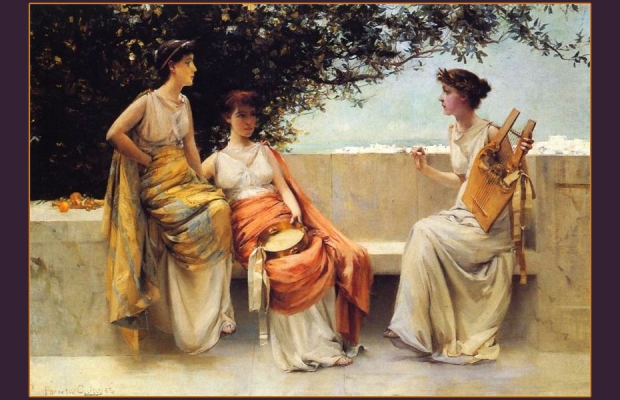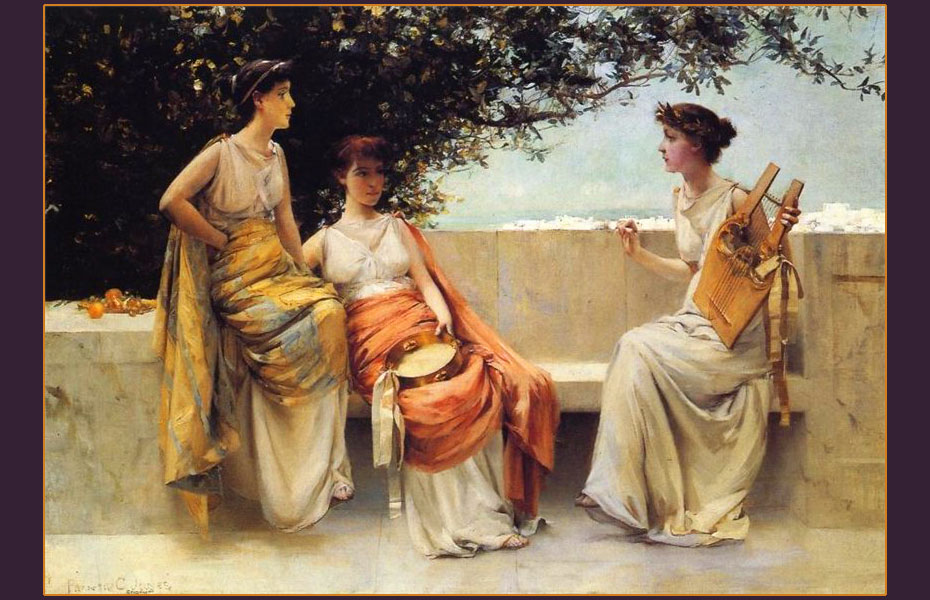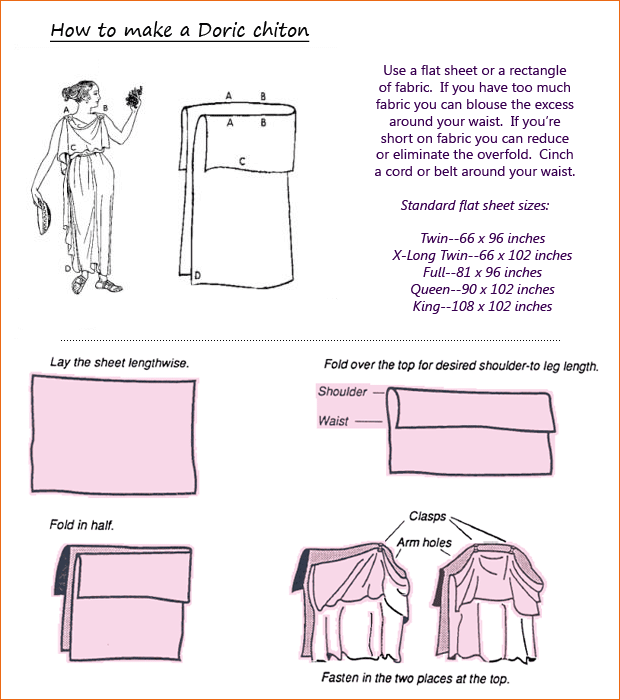Sappho (ca. 620-570 BCE) was the world’s first great love poet, composing lyrics of astonishing power and immediacy. The Greeks considered her the greatest of all the lyric poets; it’s a tragedy that most of her work has been lost. The charming painting above is by Francis Coates Jones, and since nobody really knows what Sappho looked like, it’s as good a place to start as any. That’s Sappho on the right, by the way, holding the lyre.
The Greeks wore simple tunics of dyed wool, a look which is easily replicated with sheets and safety pins. Additional veils and shawls can be added for interest (like the girls on the left side of the painting). Since Sappho talked a lot about violet and saffron, we’ll use those colors. The pieces we suggest, from left to right:
1. Flat sheet in eggplant. This is for your tunic; we give you instructions below on how to pin it together. The size sheet depends on your height, but a full-size works for most people. (By the way, it’s a misconception that the Greeks wore all-white tunics. They loved to wear deep-dyed colors.)
2. Orangey-yellow chiffon veil. There’s your saffron. You can sort of swaddle this around your waist or drape it over your shoulder.
3. Small kinnor harp. The kinnor harp, also called King David’s Harp, is similar to the ancient Greek lyre. This one is small, suitable for carrying around with you as you sing love songs about Aphrodite.
Shoes: Simple leather sandals.
How to make the tunic: The simplest ancient tunic for costuming purposes is the Doric chiton, which consists of a single rectangle of fabric folded around the body. All you need is a flat sheet, some safety pins, and a belt or cord. Here are your chiton instructions:













